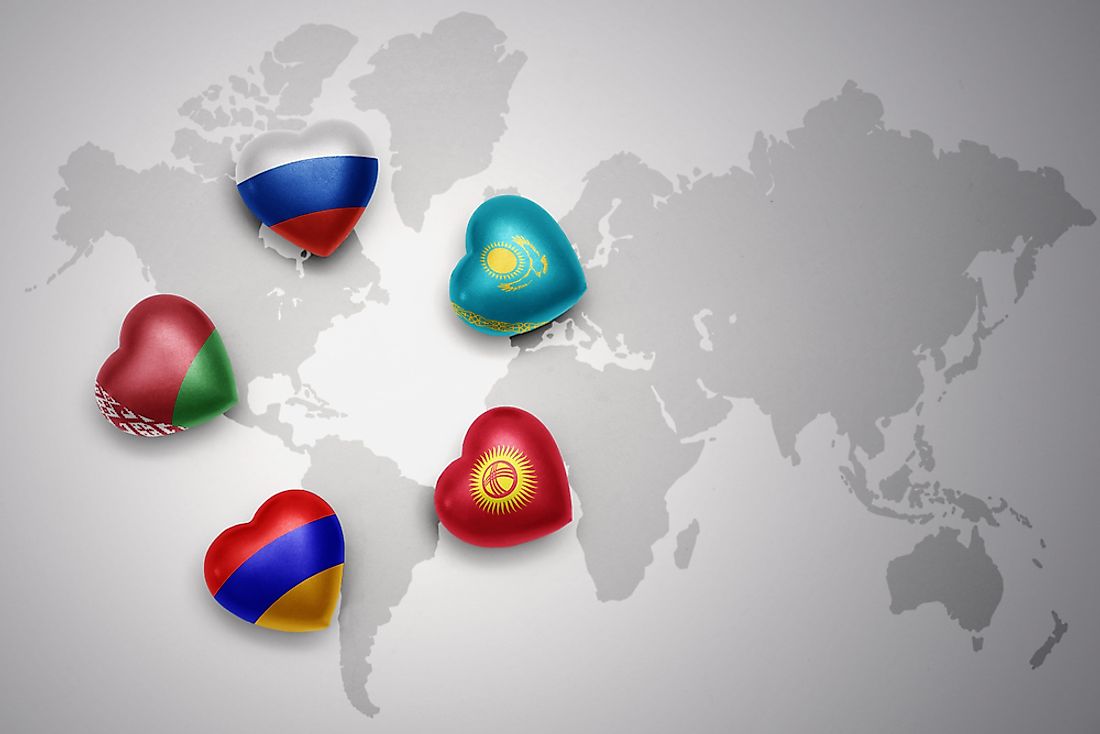What Is The Eurasian Economic Union?

The Eurasian Economic Union is a partnership of countries located in Northern Eurasia. Russia, Kyrgyzstan, Kazakhstan, Armenia, and Belarus are the member states of this union, and they enjoy several privileges as discussed here. The bloc also serves as a political union that has a well-organized leadership structure. Furthermore, the bloc is worth four trillion dollars in gross domestic product, and the total market has about 183 million people. The majority of the people come from Russia, which is the largest country in the bloc regarding population, land mass and economic power.
History
A close look at the countries forming the Eurasian Economic Union reveals that they were part of the great Soviet Union. However, the decline and disintegration of the superpower left the new states in dire economic problems. Communism was phased out, and the countries adopted the free market economy. However, it was not enough to stop the decline in their GDP hence a more drastic approach was needed. In 1994, the then Kazakhstan President, Nursultan Nazarbayev called for a formation of a regional trading bloc to counter the western trading bloc. In the following years after Nazarbayev’s speech at Moscow State University, several treaties were signed like the Eurasian Customs Union (January 1, 2010) enabling member states to have passport-free travel within their borders as well as trade.
Organization And Structure Of Leadership
Eurasian Economic Union has a leadership structure that is similar to other economic organizations in the world. For instance, most of its structure is derived from the European Union model whereby there are a rotational presidency and a court. The union’s leadership structures have their roles cut out by the treaties signed by the member states. At the top is the supreme council, which is the main decision making organ of the bloc. Heads of States from the member countries are the members. The body decides strategy and policies including fiscal matters and anti-corruption regulations.
The Eurasian Economic Union has two bodies, the council, and Collegium. The council inspects the integration process of the union, and the members are Deputy Prime Ministers of the member states. The Collegium is the executive arm of the union as it oversees the daily activities like submitting reports and recommendations. Each member states contribute three commissioners to this body to make a total of twelve commissioners, one of them becomes the chairperson and all serve a renewable four-year term. The parliament has not yet been formed, but all member states are harmonizing their laws concerning the other. Finally, there is a court to arbitrate on disputes that may arise. The court has ten judges (two from each member state) and serves a term of nine years.
Privileges To Member States
Member states enjoy the free movement of goods without the obstructions of tariffs and regulations. It is not just restricted to goods, but citizens can also live and work in any of the member states and therefore promote the free flow of capital. Through the union, member states benefit from improved trade deals with foreign countries since they negotiate as a union rather than individual states.











